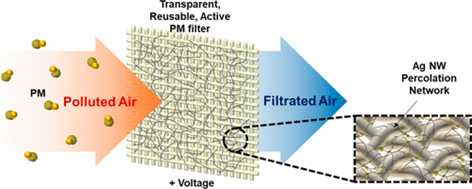- About
- Academics
-
Undergraduate Programs
- Civil and Environmental Engineering
- Architecture and Architectural Engineering
- Mechanical Engineering
- Industrial Engineering
- Energy Resources Engineering
- Nuclear Engineering
- Materials Science and Engineering
- Electrical and Computer Engineering
- Naval Architecture and Ocean Engineering
- Computer Science and Engineering
- Aerospace Engineering
- Chemical and Biological Engineering
-
Graduate Programs
- Civil and Environmental Engineering
- Architecture and Architectural Engineering
- Mechanical Engineering
- Industrial Engineering
- Energy Systems Engineering
- Materials Science and Engineering
- Electrical and Computer Engineering
- Naval Architecture and Ocean Engineering
- Computer Science and Engineering
- Chemical and Biological Engineering
- Aerospace Engineering
- Interdisciplinary Program in Technology, Management, Economics and Policy
- Interdisciplinary Program in Urban Design
- Interdisciplinary Program in Bioengineering
- Interdisciplinary Program in Artificial Intelligence
- Interdisciplinary Program in Intelligent Space and Aerospace Systems
- Chemical Convergence for Energy and Environment Major
- Multiscale Mechanics Design Major
- Hybrid Materials Major
- Double Major Program
- Open Programs
-
Undergraduate Programs
- Research
- Campus Life
- Communication
- Prospective Students
- International Office
Seoul National university Applied Nano and Thermal Science Lab led by Prof. Seunghwan Ko, developed a high-efficiency filter which filterates fine dusts
-
Uploaded by
관리자
-
Upload Date
2017.11.10
-
Views
723
Seoul National university Applied Nano and Thermal Science Lab led by Prof. Seunghwan Ko, developed a high-efficiency filter which filterates fine dusts
Ecofriendly air purification filter which combines the benefits of conventional filters

▲ Thermal Science Lab led by Prof. Seounghwan Ko : Prof. Seunghwan Ko, Ph.D. candidate Hyunmin Cho, Sungmin Cheong
Ecofriendly air purification filter which combines the benefits of conventional filters
▲ Thermal Science Lab led by Prof. Seounghwan Ko : Prof. Seunghwan Ko, Ph.D. candidate Hyunmin Cho, Sungmin Cheong
A high-efficiency fine dust filter was developed by domestic researchers to effectively filter the dust particles
Seoul National University College of Engineering (Dean Kunwoo Lee) announced that the Applied Nano and Thermal Science Lab led by Professor Seunghwan Ko of Dept. of Mechanical Engineering, have created a highly efficient fine dust filter using a metal nanowire network which is transparent and reusable.
The air purification systems that are now commercialized are a filter type that uses a fine fiber structure like a HEPA filter to filter dust and polarpolymeric filter systems use electricity to gather dust.
In the case of conventional filter type air purification, it has a disadvantage that it obstructs the natural flow of air and it is difficult to filter particles smaller than the pore size of the filter since it uses multiple filters. In addition, in order to improve air cleaning efficiency, it was necessary to replace with a new filter periodically.
In the case of polarpolymeric filter system, which is another conventional type of filter, ozone or nitrogen oxides which are harmful to the health are generated in the electric discharge process, and it consumes a large amount of the the electric energy.
Prof. Ko said, "We tried to combine the advantages of conventional air purification filters to filter out dust more effectively than conventional methods. As a result, it was possible to filter particles below the pore size and produce a more environmentally friendly filter."

▲ schematic diagram of fine dust filter
The research team applied nanowires, which were mainly used for transparent electrodes, to existing filter structures. They applied a silver nanowire to the primary fiber network to form a second metal nanowire network. Subsequently, when a voltage is applied to the secondary metal nanowire network, a fine electric field is formed on the surface of the wire, and fine dust particles smaller than the pore size can be efficiently collected by electric attraction.
In addition, it is possible to collect fine dust efficiently with a single filter, and the filter can be cleaned and reused after cleaning, which is more convenient, economical and environmentally friendly. In addition, it can be utilized in various fields in everyday life thanks to its transparent shape.
Prof. Ko said, "Ultrafine dust can be effectively removed by using filters that are developed in this research. We will take the lead in commercialization of environmentally friendly high-efficiency filters to protect the health of the citizens."
The results of the study was published in Nano Letters (High Efficiency, Transparent, Reusable, and Active PM 2.5 Filters by Hierarchical Ag Nanowire Percolation Network) on June 13.
The research was supported by the Korea Research Foundation and the Senior Researcher Support Project and by the Big Data Institute of Seoul.